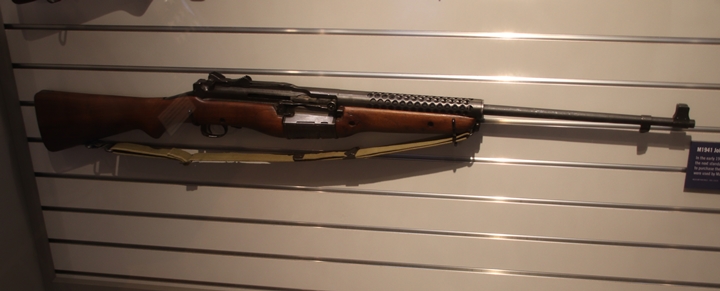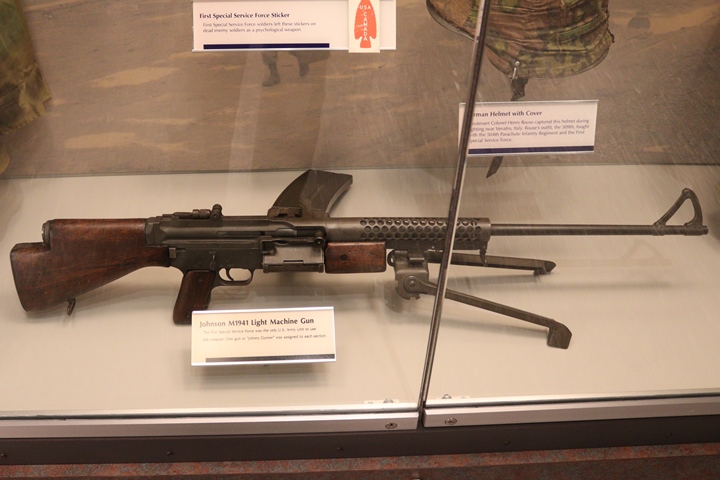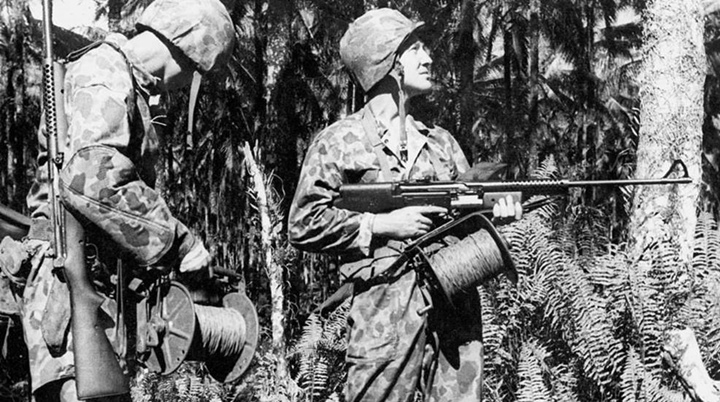|
Johnson Automatics Manufacturing Company During World War Two This page updated 11-29-2024. Johnson Automatics Manufacturing Company was created for the express purpose of producing both the M1941 Johnson rifle and the M1941 Johnson light machine gun. Both weapons were created by Melvin Maynard Johnson, Jr., a Boston attorney and USMC reserve officer. He began development of the Johnson rifle in response to the issues the new M1 Garand was having in the late 1930s during its early days of manufacture and use by the U.S. Army. The M1 Garand went on to become the standard rifle for all American military services in World War Two and Korea. In January 1945, General George S. Patton wrote, "In my opinion, the M-1 is the greatest battle implement ever devised." That was in 1945 when all of the issues had been resolved. It is obviously unknown whether General Patton would have said the same thing about the M1941 Johnson rifle if this weapon had become the standard American rifle. That was not the case in the late 1930s when many persons associated with weapons thought the M-1 was a bad idea. One such person was Melvin Johnson, who developed what he considered to be a better option than the M-1. Due to the limited production and use of the M1941 Johnson rifle by American forces in World War Two, I have only found two examples of it in my research travels.
There are several excellent online articles that describe the several year campaign to have the M1941 Johnson rifle become the standard semi-automatic weapon for the American military. Therefore, that story will not be covered here. It should be noted that the M1941 Johnson rifle had its issues also. One particular issue was that the standard U.S. Army bayonet did not work on the Johnson rifle. The bayonet shown above was developed by Mr. Johnson especially for use with the M1941 Johnson rifle. In the end, the U.S. Army continued with the M-1 Garand as the standard infantry rifle and the Johnson entry lost out. However, the historical record notes that the Dutch were interested in Mr. Johnson's rifle, and in August 1940 placed an order for 10,200 of the weapons. These weapons were for the defense of the Dutch East Indies, in anticipation of the expected Japanese attack. Melvin Johnson never intended to get into the manufacturing business and had planned to license his product with an established weapons manufacturer. However, they were all busy with other projects for the U.S. Army. Therefore, Mr. Johnson set up his own manufacturing operation. He did this in part of an unused textile factory in Cranston, RI. During a period of short supply, he was able to obtain the required equipment and raw materials to build his rifles. According to the historical record, 1,199 of the 10,200 rifles from the initial order for the Dutch East Indies were shipped from the plant before the Japanese invaded the country in January 1942. There are differing accounts as to whether they actually left the United States or not. One source has the shipment getting as far as San Francisco, CA where the shipments were blocked by the United States government. Other sources imply that the weapons were actually shipped to the Dutch East Indies. With the fall of the Dutch East Indies to the Japanese in March 1942, the United States blocked the shipment of the balance of the order. They sat in storage in the United States. What is known is that there were at least 8,000 embargoed 1941 Johnson rifles in the United States. Some sources indicate that the Marines obtained a limited amount of Johnson rifles from this stock. Others indicate the Marines purchased the weapons. It may have been a combination of both. Table 1 shows that there were multiple orders for guns, gun parts, gun barrels, and gun bayonets from 1941 through January 1942. These are in addition to the original Dutch orders in August 1940. These orders included another 10,200 rifles which were also produced, resulting in a total built of 20,400 for the Dutch. Johnson Automatics also built another 1,588 rifles, of which 1,000 were sold to Chile. The known historical record therefore indicates that there were 21,988 M1941 Johnson rifles built. Table 1 shows that there were more M1941 Johnson rifles built than the 22,988 built for the Netherlands and Chile. It shows that the USMC had a $289,000 order for guns in April 1942, which was completed by August 1942. While the USMC may have been able to obtain a few weapons from the Dutch order, they would have needed to place an official order. In 1942 Army Ordnance also awarded four contracts for gun barrels, rifles, and guns to the Johnson Automatic Cranston, RI and Providence, RI plants. While Army Ordnance was not interested in the M1941 Johnson rifle for American use, these orders were most likely for Lend-Lease to the Chinese. If the Chinese received the Johnson rifle, they would be less likely to request the M-1 Garand which was needed for American use. After September 1944, Johnson Automatics had no remaining major contracts. It is unknown whether it had more work from other sources until the end of the war a year later.
The only American U.S. Army unit to use the Johnson light machine gun was the First Special Force Service, which was a combined American and Canadian organization. It was more commonly known as the Devil's Brigade. These were used in place of the standard BAR because they weighed less than the BAR. However, as the Johnsons began to wear out, they were replaced by the BAR. As with the M1941 Johnson rifle, the 1941 Johnson light machine gun may have been ordered by Army Ordnance for use in China.
|
||||||||||||||||||||||||||||||||||||||||||||||||||||||||||||||||||||||||||||||||||||||||||||






